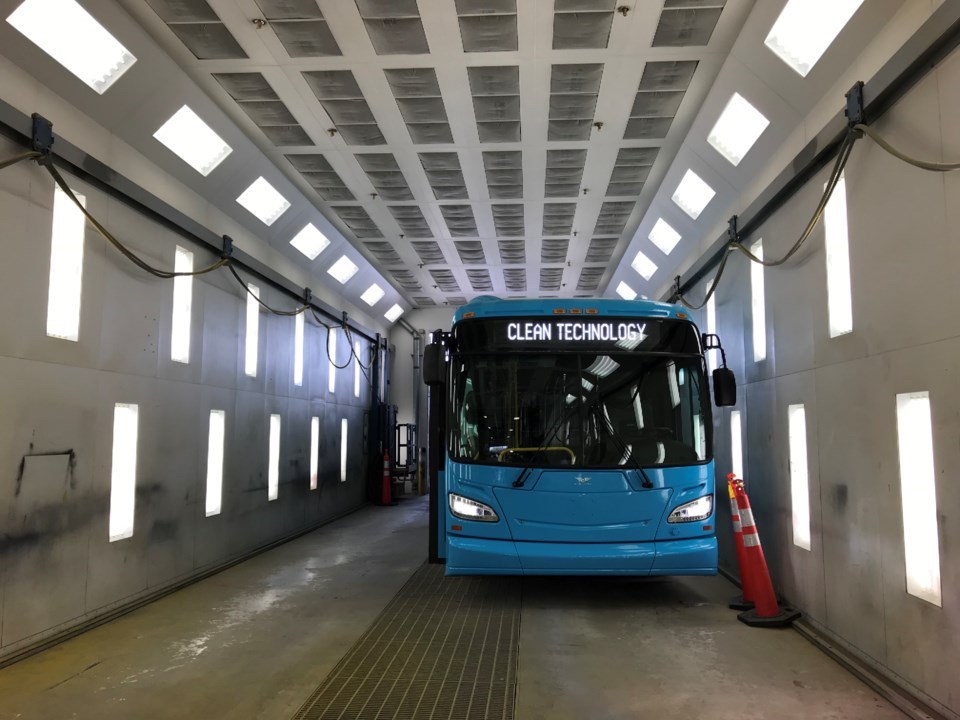Last month I wrote about the Port of Vancouver’s plans for addressing climate change. In keeping with the theme of transportation, this month I want to walk through what TransLink is up to on the mitigation front. Suffice it to say, things are electric.
By any measure, TransLink is huge. Servicing 21 municipalities, the Tsawwassen First Nation, and the unincorporated areas of the regional district, that’s about 1,800 square km of terrain to cover. The fleet encompasses two thousand buses, hundreds of SkyTrain cars, plus trains, SeaBuses and support cars. From an emissions standpoint that translated into 130,342 tonnes of CO₂ just last year, — a year in which ridership was just climbing its way back to pre-COVID numbers.
As we continue to witness disruptions caused by climate change, TransLink has to adapt to become a more sustainable public transportation system. According to UCLA, “every vehicle releases an average of one pound of CO2 [carbon dioxide] per mile driven.” But public transit lessens air [and noise] pollution, improving air quality while enhancing the quality and safety of life in a given community.
According to the World Bank, 185,000 deaths annually can be linked to vehicle pollution. Transport produces 23 percent of all global greenhouse gas emissions. Reducing emissions is critical if we have any chance of attaining the goals of the Paris Agreement, notably, “pursuing efforts to limit the temperature increase to 1.5°C above pre-industrial levels.” Transitioning to a sustainable mass transit system is more than just environmentally sound, it is a responsible corporate goal.
TransLink Climate Action Plan (CAP) outlines a vision of an emissions-free transit fleet by 2050. I’ll save you having to do the math, that’s 28 years away. One of the earliest milestones is to have 383 buses running fully on renewable natural gas (RNG) by 2024. Moving to RNG is a key to CAP, but it’s not the only step. Battery-electric buses figure to play the starring role in the fleet of the future with 136 of those set to hit the streets in two years, and almost 500 battery-electric buses overall by 2030.
“Public transit is already one of the most sustainable ways to travel, we are continuing to do our part to address the ever-present climate emergency,” TransLink says in its Accountability Report for 2021.
A sustainable mass transit system offers plenty of upside. Of course, there is the cleaner air benefit, and the residual health benefits that brings, but there are other considerations: reduced traffic congestion; decreased noise pollution; safer roads; and better road conditions, which means saving money on repair work. It is hard not to get Utopian when thinking about what a sustainable transit system can mean to a city, its community, and its environment.
TransLink's plan includes a menu of fuel options such as RNG, (a “carbon neutral” option as it is generated from plant matter rich in carbon), hydrogen, and hydrogenation-derived renewable diesel, none of which are problem free. Storage capacity and the limited number of producers/suppliers being the most consistent issues that need addressing.
The electricity needed for the battery demands of the proposed fleet has negligible qualities, too. Lithium, the key component of this technology, is ugly, extractive, and so cheap that it is unlikely to be usurped anytime soon. But, compared to fossil fuels, battery power is a cleaner step forward.
The stark reality, however, is that there is no silver bullet when it comes to a sustainable fuel source. Such is our dependence on fossil fuels; we need an array of solutions to break away from that dependency.



